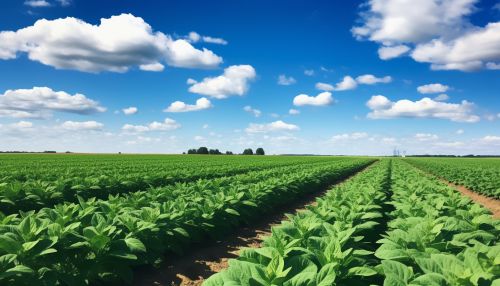Disease Resistant Crops
Introduction
Disease-resistant crops are a significant development in the field of agriculture and plant pathology, offering potential solutions to many challenges that farmers and food producers face worldwide. These crops are genetically engineered or bred to resist various diseases that can devastate yields and lead to food shortages.


History and Development
The concept of disease-resistant crops traces its roots back to the early 20th century, when scientists began to understand the genetic basis of disease resistance in plants. The first disease-resistant crop varieties were developed through traditional plant breeding methods, which involved cross-breeding plants with natural resistance to certain diseases with high-yielding varieties.
Genetic Engineering and Disease Resistance
The advent of genetic engineering in the late 20th century revolutionized the development of disease-resistant crops. Scientists can now directly modify the genetic makeup of plants to include genes that confer resistance to specific diseases. This process involves the identification of resistance genes in other plants or organisms, and their subsequent insertion into the plant's genome using various techniques such as Agrobacterium-mediated transformation or CRISPR-Cas9 gene editing.
Types of Disease Resistance
Disease resistance in crops can be broadly classified into two types: qualitative and quantitative. Qualitative resistance, also known as vertical resistance, is governed by a single gene and provides high levels of resistance against a specific pathogen. On the other hand, quantitative resistance, also known as horizontal resistance, is controlled by multiple genes and provides moderate levels of resistance against a range of pathogens.
Benefits of Disease-Resistant Crops
The primary benefit of disease-resistant crops is their ability to maintain high yields despite the presence of disease-causing pathogens. This can significantly reduce the need for chemical pesticides, leading to more sustainable farming practices and reducing the environmental impact of agriculture. Furthermore, disease-resistant crops can help ensure food security by preventing crop losses due to disease outbreaks.
Challenges and Controversies
Despite their benefits, the use of disease-resistant crops is not without controversy. Some critics argue that the widespread use of these crops could lead to the evolution of more virulent pathogens. There are also concerns about the potential environmental and health impacts of genetically modified crops. Furthermore, the development and distribution of disease-resistant crops raise issues of intellectual property and access, particularly for farmers in developing countries.
Future Prospects
The future of disease-resistant crops lies in the continued advancement of genetic engineering technologies and our understanding of plant-pathogen interactions. With the advent of techniques such as CRISPR-Cas9, scientists can now edit plant genomes with unprecedented precision, potentially creating crops that are resistant to multiple diseases. Furthermore, advances in genomics and bioinformatics are enabling researchers to identify new resistance genes and understand their function at a molecular level.
